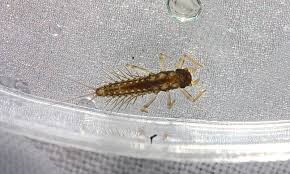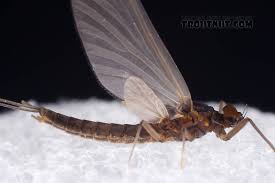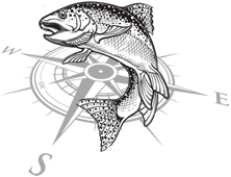Aquatic Entomology
Paraleptophlebia
(Mahogany Dun)
 Paraleptophlebia Dun
Paraleptophlebia Dun
 Mahogany Dun Nymph
Mahogany Dun Nymph
For fly anglers of the west the Mahogany Dun or Paraleptophlebia is an important mayfly to know about for it has a fall emergence throughout the west. Some anglers call them Blue Quill, Mahogany’s, Rusty’s or little brown mayflies. Whatever you call them it’s a mayfly you will want to know about for fall fly fishing. Here in the Northwest the Paraleptophlebia is an important mayfly to recognize for it’s usually the newest mayfly after a long season of casting BWO’s and PMD’s.
The nymph is a crawler and when emergence is nearing will start moving towards shore and prefers to emerge or hatch along shallow seams, eddies and flats in shallow water. A good way to recognize the nymph is by it’s three tails and darker color. If you are seining the water, start at the most likely areas stated above. Paraleptophlebia’s emergence is usually is shallow water or in some instances, the Paraleptophlebia will crawl out of the water to emerge. In the Northwest, Paraleptophlebia usually starts its emergence early in the afternoon around 1pm and will go up to and past 4pm.
The dun will usually emerge from its nymphal shuck just under or in the meniscus (Surface film) and break the meniscus as a full on dun. The emergence of the Paraleptophlebia is almost always in back eddies, flats or along current lines. The clue here is you will see the duns at these locations and of course rising trout. Unlike most emerging mayfly duns that quickly dry their wings and fly away, the Paraleptophebia will float a while longer on the river sometimes up to 2 or 3 minutes.

The dun is usually size 16 but may be a bit smaller on some rivers. The body of the Paraleptophlebia is anywhere from a dark olive to a rusty brown color which is why the fly we use to match the Paraleptophlebia is called a Mahogany Dun. The wing of the Paroleptophlebia is a dun color or medium gray color. I’ve had some folks ask me what this little brown mayfly is they saw floating down a river in the fall. The clue is the color of the wing. I’m looking for a rust colored body with a gray wing.
A typical hatch or emergence by the Paraleptophlebia will be sparse to mild in comparison to other emerging mayflies. So you probably won’t see swarms of duns on the water and in the air. What you most likely will see are smaller and more local hatches along the river. What anglers like about the Paraleptophlebia may fly emergence is it tends to be longer in duration than the average mayfly and the duns will float longer on the river. This alone really can kick off a good feeding trend among hungry trout.
When fly fishing emergers during a Mahogany Dun hatch, a good starting fly for me would be a size 16 Pheasant Tail nymph. Yes, I said Pheasant Tail nymph. Back in the day we called them floating nymphs. Keep in mind a Paraleptophlebia nymph is dark in color and can best be duplicated by using a Pheasant Tail nymph. Other emerger pattern that works well is a Pheasant Tail Soft Hackles. Your classic Parachute Mahogany Dun is a good bet and a good start to imitating the emerging dun.

